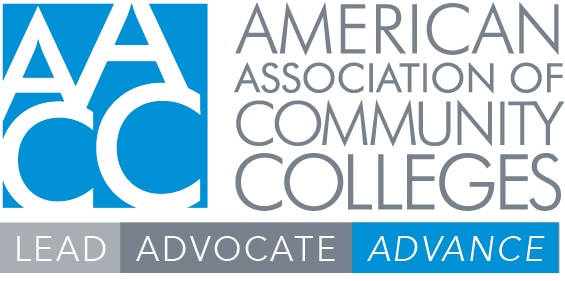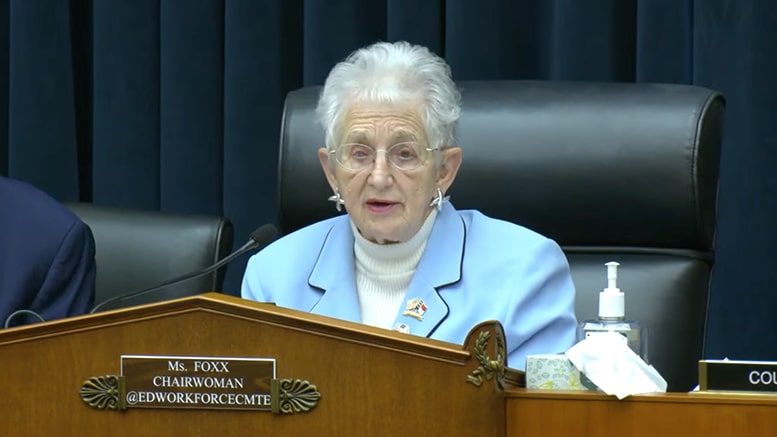Rep. Virginia Foxx (R-North Carolina), chair of the House Committee on Education and the Workforce, on Thursday released the College Cost Reduction Act (CCRA, H.R. 6951), which contains far-reaching proposals for what is designed to hold colleges accountable — providing incentives and penalties based on costs, completion rates and tuition levels.

The bill would also make changes to accreditation, student loan repayment, the Pell Grant program and other aspects of the Higher Education Act (HEA). The committee released a fact sheet, bill summary and the text of the legislation, with links in its press release.
The House bill is the second in an expected series of bills from committee Republicans to reauthorize all aspects of HEA. The first bill was the DETERRENT Act, which deals with foreign influence in higher education and was passed by the House in early December.
Risk-sharing for colleges
The centerpiece of CCRA is two proposals that would alternatively require payments from colleges in a new risk-sharing scheme tied to student loan repayments and reward some colleges through a new grant program that would replace the Supplemental Opportunity Education Grants (SEOG) program. The risk-sharing mechanism would require colleges to pay a portion of the cost of missed loan payments or interest not paid, by their former students. The portion amount is determined by a calculation that results in an earnings-price ratio (EPR). As the name implies, the EPR is the ratio of former students’ median earnings above 150% of the federal poverty line, divided by the cost of the program they attended. Therefore, the higher the EPR, the “better.”
The U.S. Education Department (ED) would determine an amount for each student cohort that is the sum of loan non-payments – which includes both missed payments and any interest that is forgiven under the new loan repayment plans (see below). The amount that the school is required to pay is the non-payment amount multiplied by 1-EPR. Consequently, the higher the EPR, the less the college is required to pay, and any institution with an EPR greater than one would not be required to pay anything.
An incentive formula
The EPR also figures prominently in the new PROMISE Grants program (not to be confused with America’s College Promise, the legislation that would make community colleges tuition-free). An institution’s grant amount is determined by taking its total Pell Grant funds awarded, multiplying that amount by its EPR-1, and then multiplying that number by the percentage of students that complete their programs on time. To receive a grant, therefore, an institution’s EPR must be greater than one.
Since the PROMISE program would be funded, in part, by the money that institutions are required to pay under the risk-sharing process, the net result is a distribution of funds from schools with lower EPRs to those with higher ratios. According to an analysis by Preston Cooper of the Foundation for Research on Equal Opportunity, the community college sector would fare best under this scenario, netting $1.7 billion in additional funds after subtracting out the loan repayment penalties. Private, non-profit colleges fare the worst.
Other notable aspects of the bill include:
- A requirement that colleges use a standardized financial aid offer sheet developed by ED.
- Updates to the College Scorecard and the development of a new federal postsecondary data system, but one that only collects information on students who receive federal financial aid. Foxx remains adamantly opposed to a data system that encompasses all students.
- The amount of annual student aid a student could receive would be capped at the national median cost of attendance for similar programs.
- Implementation of “Pell Plus,” which would provide increased Pell grants to juniors and seniors that are on track for on-time completion. To be eligible for Pell Plus or the PROMISE Grant program, an institution must provide students with an upfront maximum price for the entire program, which cannot increase while the student is enrolled (up to six years or the median time to completion of the program).
- New yearly and aggregate caps for student loans, as well as more flexibility at the institutional level to determine loan amounts.
- Loan repayment options would be narrowed to a standard 10-year repayment plan or a new “repayment assistance plan,” which is an income-driven plan that requires borrowers to pay back at least 10% of the amount by which their wages exceed 150% of the federal poverty line. However, if that amount does not cover the interest owed by the student, any remaining interest would be forgiven. Students would not have to pay any more than they would have had under the standard 10-year plan.
- A host of statutory and regulatory requirements would be overturned, including the 90/10 rule, gainful employment regulations and others.
- A number of changes to accreditation, including provisions that would open the door for new accreditors designated by states. There are also provisions making new requirements relating to accreditors’ outcomes requirements for institutions.
The legislation faces the steepest odds of being enacted. However, it will likely greatly influence conversations around federal higher education policy in the coming months.





